RCF
Regionale Coordinatiepunt voor Fraudebestrijding
Regionale Coordinatiepunten voor Fraudebestrijding, also RCF,
was to build an extranet platform for their members, nine regions, and connected municipalities.
The web applications empower account managers of all regions to work in the field.
The user’s group consists of managers and employees of various organizations such as
the Tax Authorities, the VNG, the Police, Social Affairs, and Landelijke Sociale Recherche.
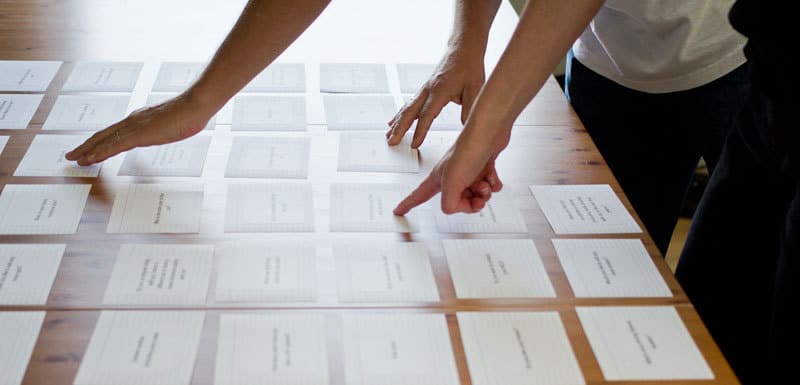
MY ROLE
In the overall 8 years from 2002 to 2010,
I led the design of the corporate website, intranet,
and extranet two times, across Android,
Desktop and Web since the outset of the project in January 2004.
Up until October 2010, I led efforts to evolve the service
and address customer pain‐points related to search
experience on the knowledge platform.
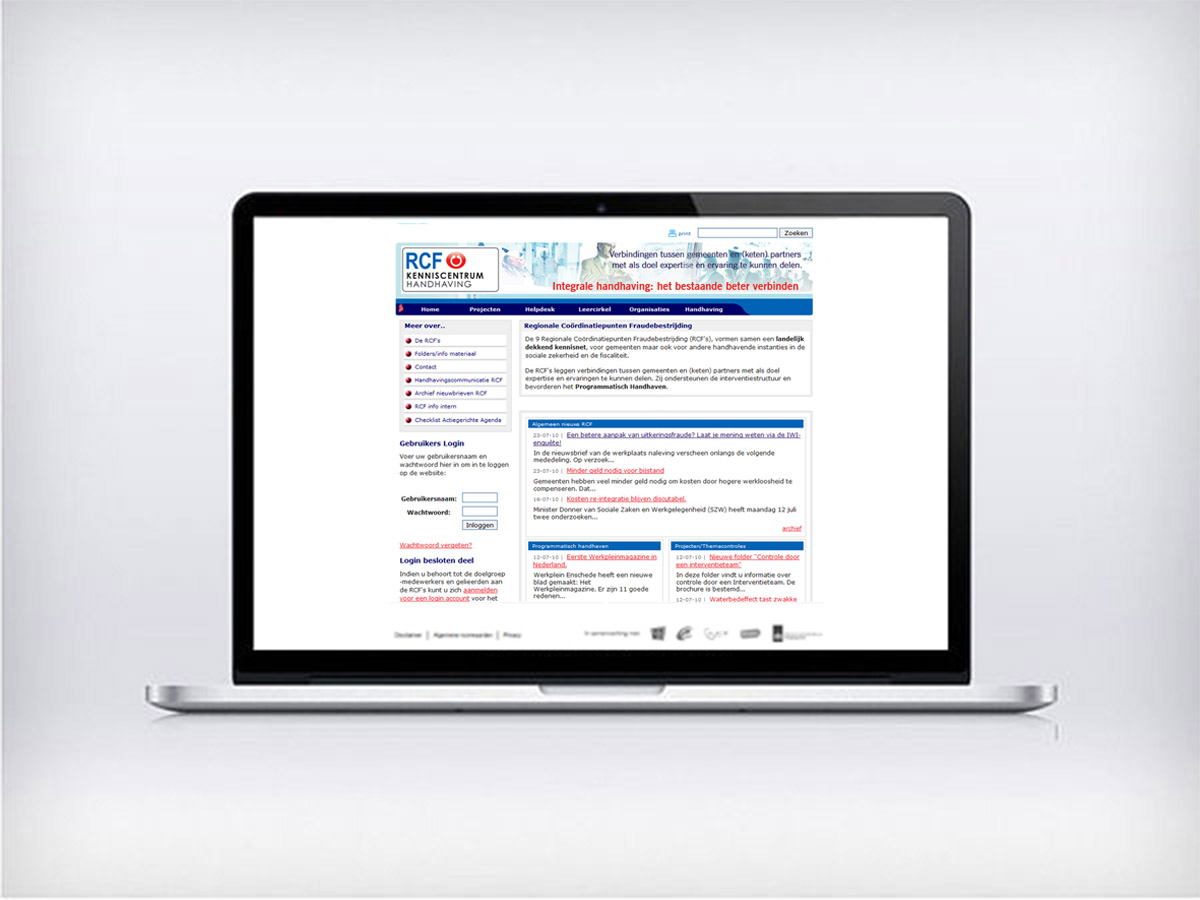
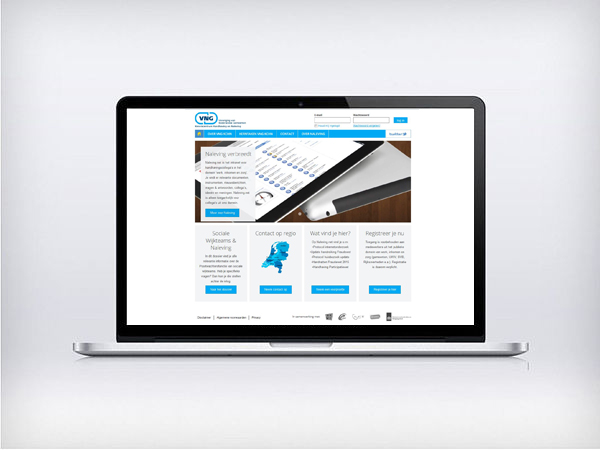
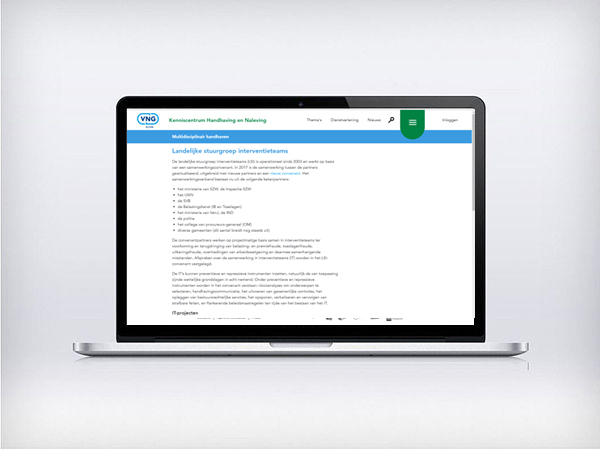
PROCESS
Customer Insights & Ideation
I partnered with two project managers from the RCF project to uncover insights, workshops, qualitative research, and translate concepts into features that address user behaviours and motivations.
Experience Strategy & Vision
I created frameworks and prototypes to share the vision, design principles and content strategy. This helped to evangelise ideas, gain alignment and drive decision making.
Planning & Scope Definition
I defined the product with my project manager partners. I evangelised user goals and balanced project goals. I prioritised and negotiated features for launch and beyond.
Oversight & Coordination
I designed across and collaborated with two developers to translate product features for each platform context.
Design Execution & Validation
I designed down responsive and for mobile with TYPO3. I executed journeys, wireframes, prototypes and design specs.
Leadership
I designed up and presented works to gain buy‐in from executives, senior stakeholders and many other RCF users, like VNG, Divosa, LSI.
The challenge
ENVISIONING TRANSFORMING SERVICE DELIVERY
The objective of the extranet is the provision of an additional medium as a service to its members. Not only offering timely and comprehensive information, but also the opportunity to communicate. This should improve the interaction between the RCF and municipalities. RCF asked me to help them to set up a knowledge platform for VNG all cities to build an archive of all the intervention reports, protocols, handbooks and first-hand news about national fraud cases. This involved designing the RCF extranet and envisioning how we could use the web to transform service delivery to all intervention Professionals.
The approach
LEAN STARTUP
1
Collect insights With users
Specification of requirements and functional design. Starting with collecting all information that is present , followed by a card sorting and affinity diagramming workshop. From there I set up UML use- Case Diagrams.
2
Build, measure and learn
We build, measure, learn
As I designed the UX and UI, developers started setting up the TYPO3 front end and back end to be used by our clients.
3
Development & testing
The actual development of the different web applications and the building of the website and testing.
4
Implementation
Point
Usertesting, quality assessment, coaching, implementation of the application on the work floor.
Halfway through we set up a training program for the use of the platform with specific roles. Admin, content management, development. But also the different user’s profiles like, managers and performers.
The discovery
DIGITIZING THE INFORMATION
Insights from our discovery work indicated that in many areas a web-based solution could help to improve the work of the professionals. They do not need to invent or set up an intervention but just read the examples in the archives. They liked the idea not to write so much anymore.
To make a difference we needed to provide a more holistic solution that considered our users needs relating to:
- support with their work process
- access to personified direct information, communication, transition info
- planning facilities
- work registration mobile app
- the intervention projects record
- workflow with internal messaging, work planning, roasting, calendar
- the personnel file
- document for the quality manual, intervention reports, including updating
- a knowledge network for keeping protocols and actions to standards
These insights began pointing to a web-based solution with a TYPO 3 database at the core.
Card sorting and affinity diagramming with the team.
UX designer with management members, project leader, and content manager.

The framework
THE EXTRANET
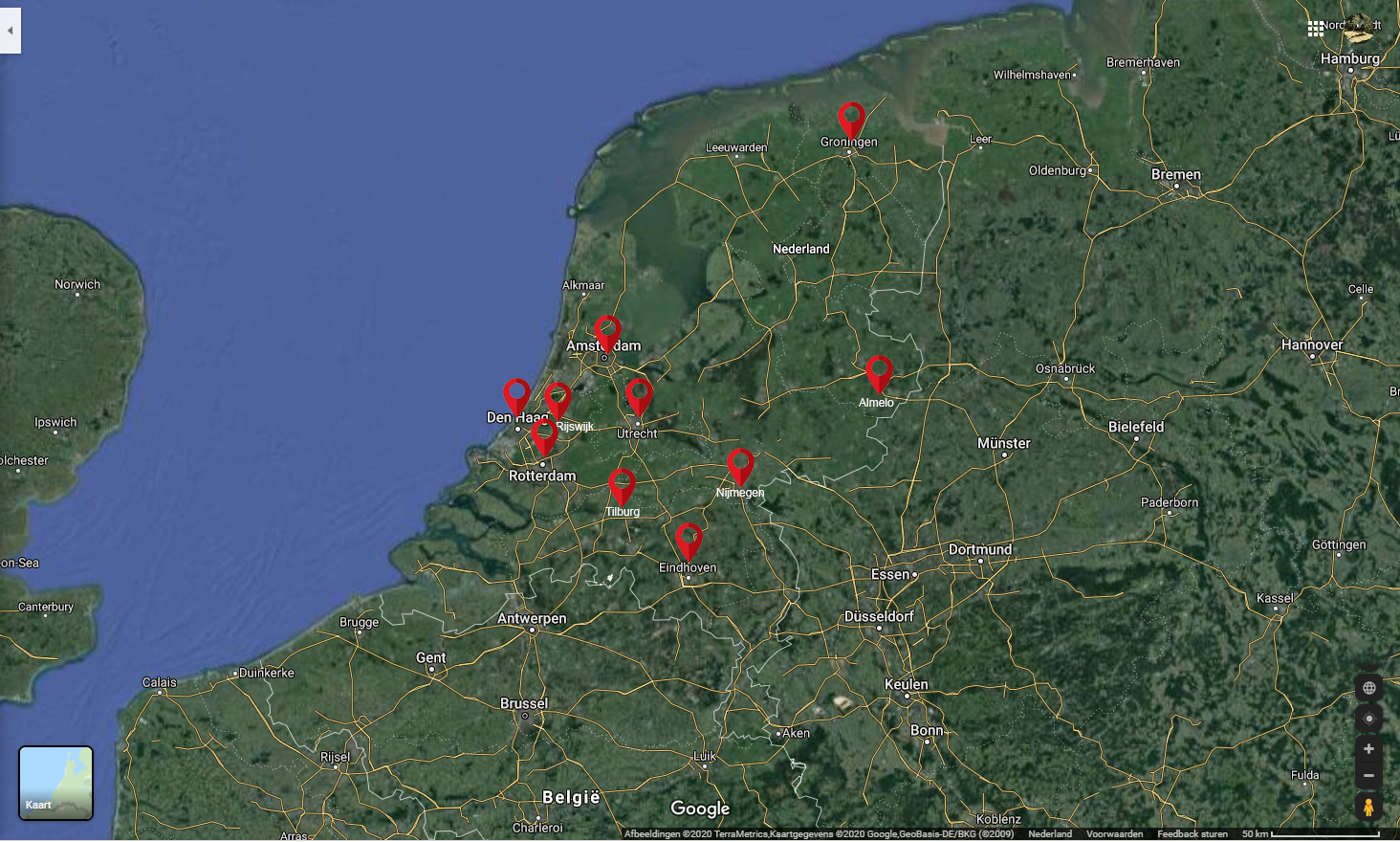
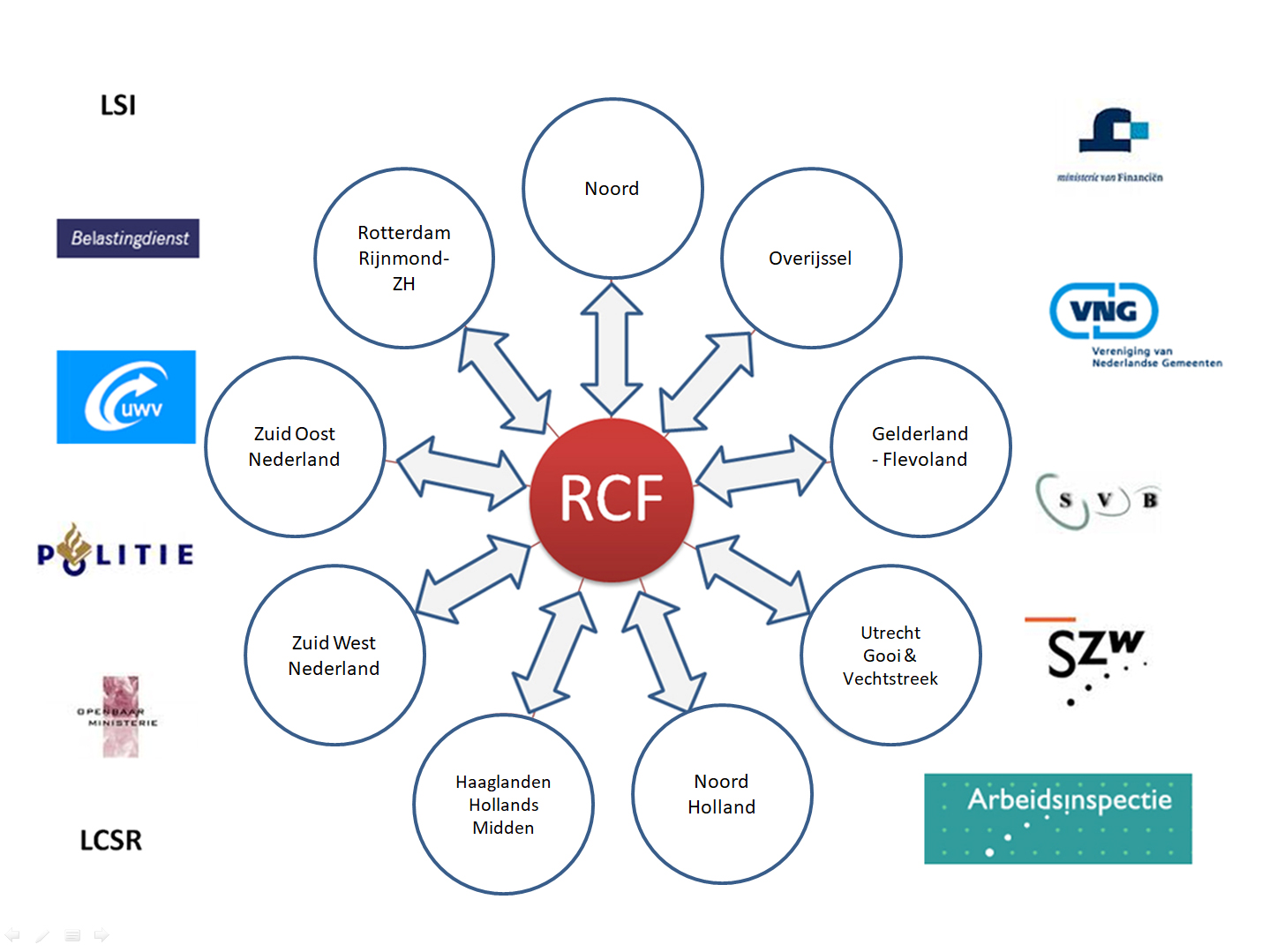
De Landelijke Helpdesk
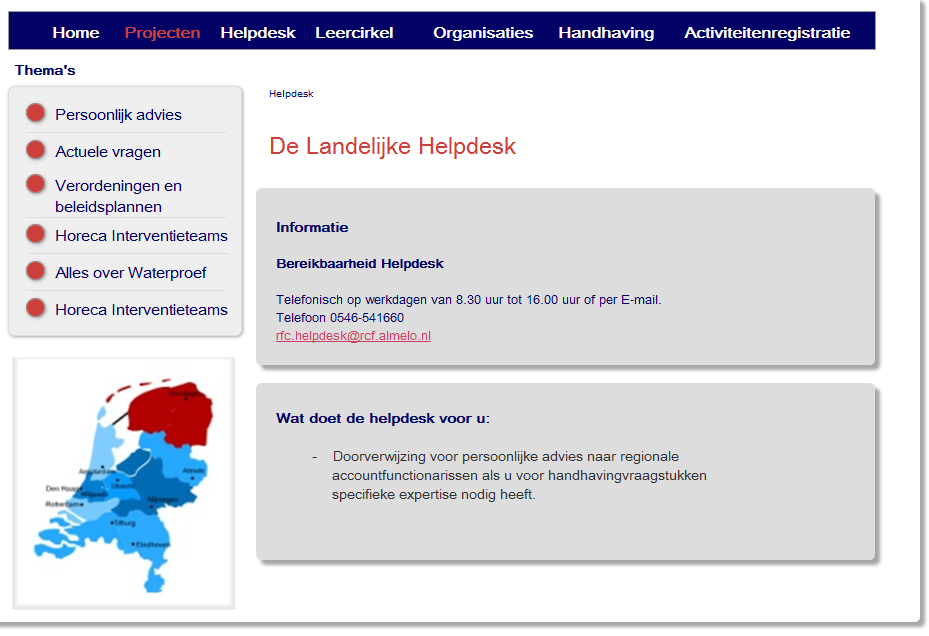
De Projecten – en documentenzoeker
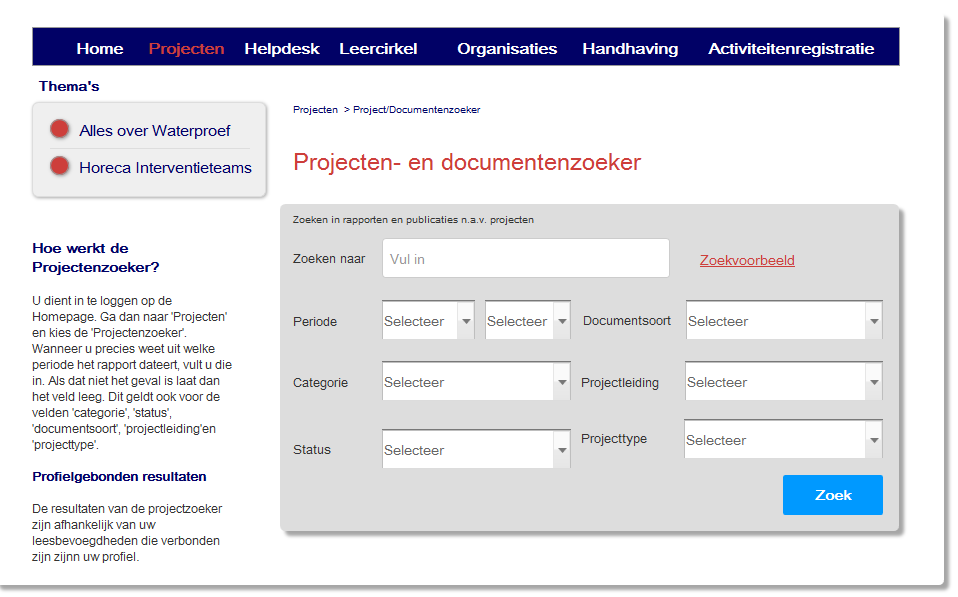
Activiteitenregistratie
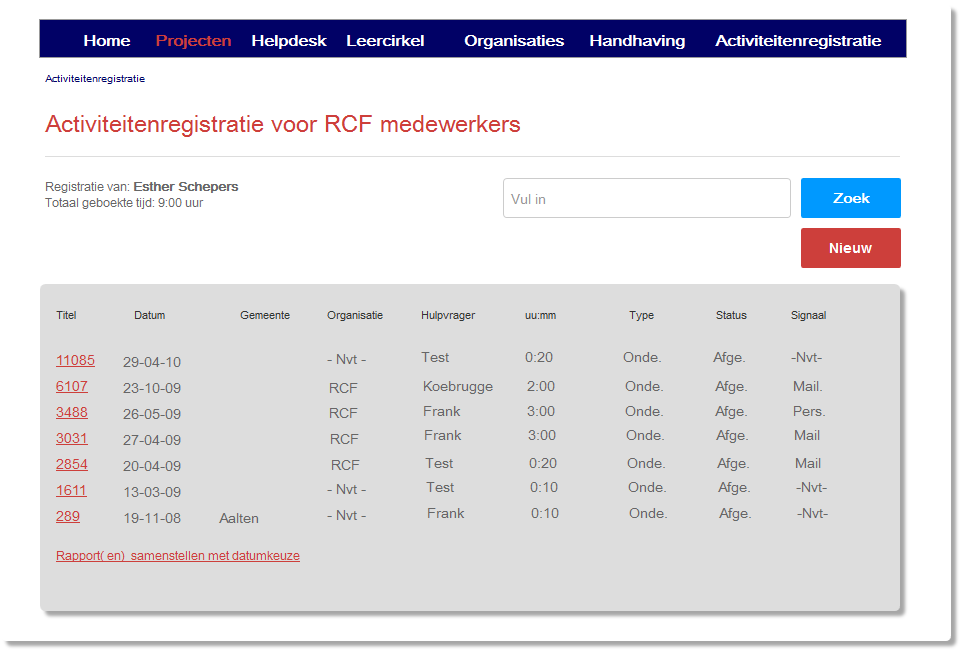
De mobiele app
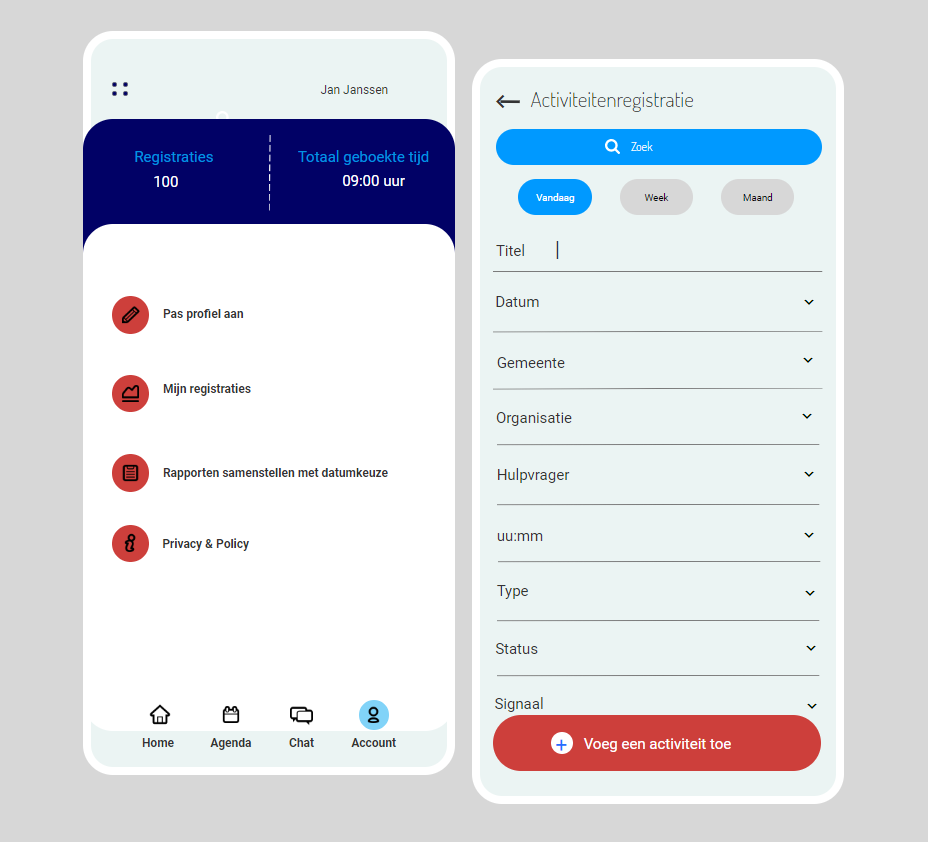

The results
All national MUNICIPALITIES
The RCF Platform became to be an information source for documents, white papers, intervention reports, protocols, and news but also a tool for account managers to register their working hours and activities. We also built a seminar plugin for visiting several seminars. All 400 municipalities got access to this platform with 1500 different account profiles. Unfortunately for us, in 2010 this extranet became a part of a great national portal NALEVING.NET and we had to hand it over to the Ministry of Social Affairs.
Skills: UX Architecture, Information architecture, Work Flow/Interaction Design, UX designClient: Overheid: Regionaal Coördinatiepunten voor Fraudebestrijding
Project: Website, intranet, extranet
Team: Projectleader, Contentmanager, Developer and UX designer
Tools Used: UX research tools, Customer Journey mapping, Card sorting, User task flow charts, Personas, Illustrator, Photoshop, TYPO3, Axure
Website: Naleving.net
DURATION
From 2002 when the project was set up till 2010 when the website RCF.nl should be integrated into Naleving.net
I was involved as a Design Thinker, web designer/UX designer leading the project.
